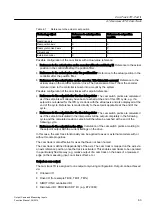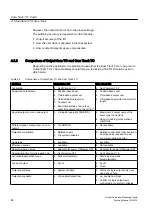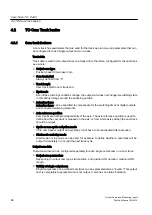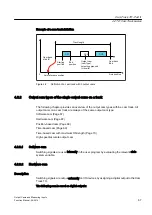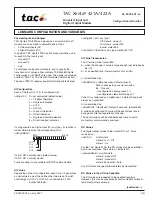
● if the axis position is within the activation range
● if the axis position value is shifted into the activation range of the output cam
The position value of the interconnected object can change abruptly, for example, when it
is homed or when its coordinate system is shifted with the _redefinePosition command.
The output cam is switched off:
● if the axis position is outside the starting or end position
● if the position value is shifted outside the activation range
● via commands that deactivate the output cam, e.g. _disableCamTrack,
_setCamTrackState, _resetCamTrack
Cam activation range
The activation range of the output cam is defined from the start position to the end position in
a positive direction of motion, i.e. in the range between the starting position and end position.
If the end position is greater than the starting position, the activation range is defined by the
starting and end positions (see figure above).
The activation range is outside the range between the end and starting positions if the end
position is less than the starting position (see figure below).
&DPDFWLYDWLRQUDQJH
6WDUWLQJSRVLWLRQ
(QGSRVLWLRQ
&DPDFWLYDWLRQUDQJH
Figure 4-4
Position-controlled cam with an end position less than the starting position
Note
This definition of the activation range is possible for all modulo and non-modulo axes.
ON duration
The ON duration of the output cam depends on the velocity at which the axis traverses the
output cam length.
4.2.2.4
Time-based output cam
Switching behavior
Time-based cams on a cam track switch independently of the direction of motion, i.e. they
always have a positive and negative effective direction.
Cam Track TO - Part II
4.2 TO Cam Track basics
Output Cams and Measuring Inputs
Function Manual, 04/2014
69









